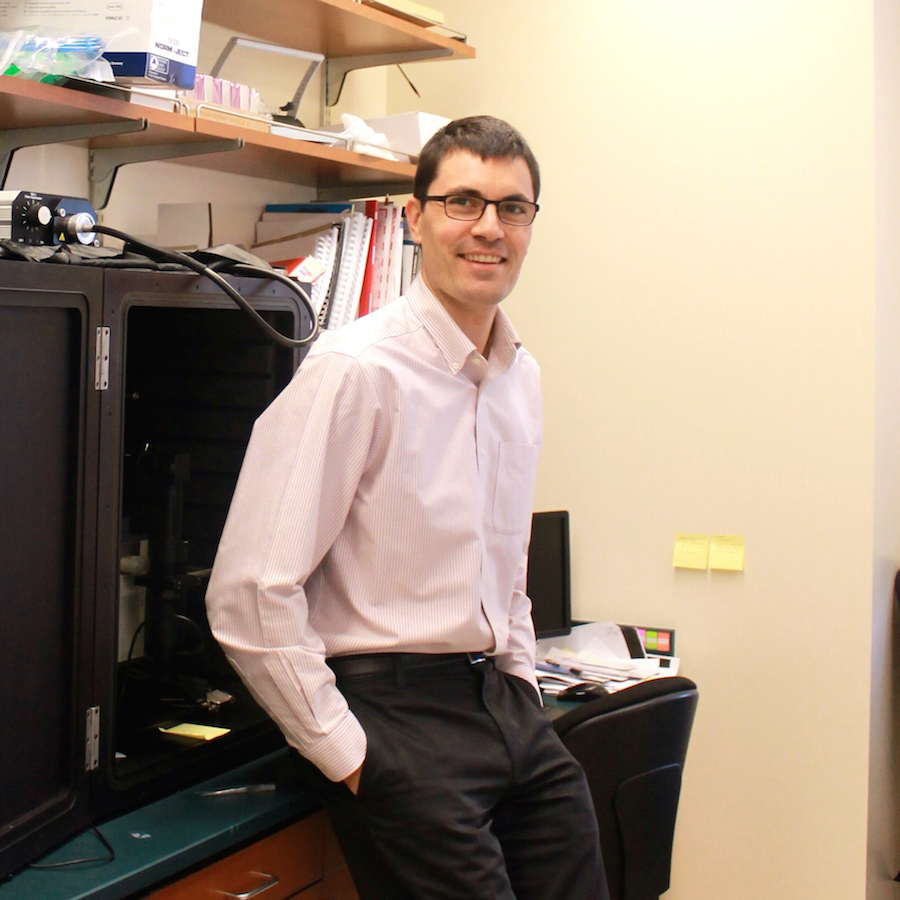 Former Damon Runyon Innovator Guillem Pratx, PhD, and colleagues at Stanford University have devised a way to use a common imaging technology called positron emission tomography, or PET, to watch the movement of a single cell injected into a laboratory mouse in real time. This may eventually allow scientists to track individual cells as they move inside patients, rather than just seeing fixed images at a time point. This potentially could help evaluate the effectiveness of cellular therapies, such as cancer-fighting CAR-T cells, to see if they are reaching the target tissue and the tumor response.
Former Damon Runyon Innovator Guillem Pratx, PhD, and colleagues at Stanford University have devised a way to use a common imaging technology called positron emission tomography, or PET, to watch the movement of a single cell injected into a laboratory mouse in real time. This may eventually allow scientists to track individual cells as they move inside patients, rather than just seeing fixed images at a time point. This potentially could help evaluate the effectiveness of cellular therapies, such as cancer-fighting CAR-T cells, to see if they are reaching the target tissue and the tumor response.
Tracing a single cell in a mouse
PET scans rely on the use of radioactive drugs called tracers. These tracers are injected into the body and accumulate in areas of high metabolic or chemical activity, which can often signal the presence of diseases like cancer. Large, whole-body scanners are then used to identify the location of the radioactive signal within the patient.
Until now, it has been impossible to label a single cell with enough radioactivity to be detectable within a living animal. To overcome this challenge, Dr. Pratx loaded mesoporous silica nanoparticles with the radioisotope, and then attached them to human breast cancer cells grown in the laboratory. The nanoparticles are very porous, like a sponge, and could enter the cell.
The technique allowed researchers to trace the movement of a single labeled cell from its injection into the tail vein of a laboratory mouse to its final resting place in the animal's lung. The labeled cell zipped along in the blood flow at a speed of five centimeters per second.
The researchers are optimizing the technique, called “cellGPS”, for use in humans.
Read more: Nature Biomedical Engineering







